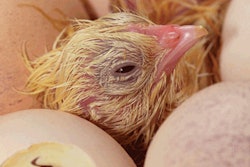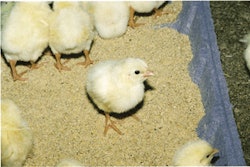Optimization of pellet quality is of great concern to the poultry industry because of potential impacts of broiler performance, nutrient availability, and cost of production. However, uniform guidelines for pellet manufacturing are not available. Easily manipulated feed manufacturing parameters, such as steam pressure and conditioning temperature, vary greatly among the commercial feed mills. Both low (138 kPa) and high (552 kPa) steam pressures and low (158 F) and high (194 F) conditioning temperatures have been proposed to optimize pellet durability, improve nutrient availability, lower energy consumption, and destroy potential pathogens (i.e., Salmonella) and anti-nutritive factors (i.e. trypsin inhibitor in soybean meal).
In this study, the authors aimed to provide a general recommendation for optimal pellet processing pressures and temperatures. In a 2x2 factorial arrangement of high (HT) and low (LT) conditioning temperature (180 and 200 F) and high (HP) and low (LP) steam pressures (138 and 552 kPa) were applied to corn-soybean meal based basal diet. The feed was extruded through a 3/16 in. x 1 ¾ in. die with a die thickness/length to die hole diameter ratio of 9.45 and then cooled with ambient air in a horizontal cooler. Three additional feed treatments, unprocessed mash, HPHT feed ground to mash, and a half and half of HPHT feed pelleted and ground, were also prepared. Each feed was then analyzed for moisture, mineral and protein content; bulk density; pellet durability index (PDI) and for modified pellet durability index (MPDI). Each feed was then fed to straight-run broilers to evaluate live and processing performance at 39 days of age. In addition, nitrogen corrected true metabolizable energy (TME) values and true amino acid digestibility (TAAD) were determined using SCWL roosters.
Increasing conditioning temperature increased pellet mill production rate, PDI and MPDI, and reduced percentage of total fines produced. This effect was due to additional die lubrication and feed particle adhesion from increased moisture and heat. Pellet pressure also increased DPI and MDPI, but to a lower extent than conditioning temperature. As expected, feed intake, weight gain, and final weights increased and feed conversion decreased linearly among birds fed mash, half and half reground mash and pelleted treatments. Regrinding pellets reduced feed consumption and gain to the level of mash diets. Trends for improved breast yield were seen with broilers fed HP pellets; whereas conditioning temperatures did not affect breast yield. Varying conditioning temperature and pressure did not affect amino acid digestibility and TME values. These results suggest that even a small improvement in pellet quality may improve broiler performance.

















